The history of marijuana is a rich one filled with exciting twists and turns and all kinds of things one wouldn’t expect. There are two distinct types of marijuana which are sativa and indica. Today, two sides of the marijuana debate continue argue with one another. The more traditional view is that as marijuana is considered a drug, it is not safe for consumption and smoking marijuana needs to be stopped completely. But increasingly more people are starting to come to terms with the fact that marijuana is a recreational substance that more and more people are starting to use worldwide. Medical marijuana programs exist for those with medical conditions, but the drug still remains illegal for those without a card. Only time will tell what the fate of cannabis will be.
Marijuana in Ancient Times
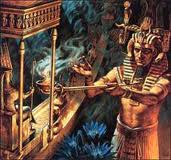 Since the ancient date of 2737 B.C., people have been using marijuana for both its medicinal and its euphoric properties. Shen Nung, the emperor of China at the time, was the first to call cannabis a psychoactive drug. But for much of its early use, marijuana was more valued as medicine than it was a recreational drug. The emperor stated that marijuana was useful for absent-mindedness, malaria, rheumatism, and gout. While treating absent-mindedness might be a bit of a stretch, cannabis was commonly used to treat these illnesses in ancient times. Marijuana was used in recreation much more commonly once it arrived in India. As alcohol was banned by the Koran, this was one of the only forms of recreation available to Muslims. From India, marijuana spread to North, Africa and Europe before it arrived in the Americas in 1545.
Since the ancient date of 2737 B.C., people have been using marijuana for both its medicinal and its euphoric properties. Shen Nung, the emperor of China at the time, was the first to call cannabis a psychoactive drug. But for much of its early use, marijuana was more valued as medicine than it was a recreational drug. The emperor stated that marijuana was useful for absent-mindedness, malaria, rheumatism, and gout. While treating absent-mindedness might be a bit of a stretch, cannabis was commonly used to treat these illnesses in ancient times. Marijuana was used in recreation much more commonly once it arrived in India. As alcohol was banned by the Koran, this was one of the only forms of recreation available to Muslims. From India, marijuana spread to North, Africa and Europe before it arrived in the Americas in 1545.
Cannabis in the New World
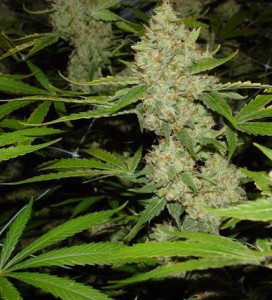
Spain was the first country to supply the new world with cannabis followed soon after by the English. This was one of the most important crops in all of Jamestown in 1611 and was used mainly as a fiber. However, hemp could not compete with cotton as a cash crop in the southern states and thus declined in popularity. It is interesting to note that some prescription drugs had small amounts of marijuana in them at the time. But cocaine and opium were used more often in these prescriptions and at higher doses. It wasn’t until the dawn of the twentieth century that marijuana would really be considered a recreational drug by most. During Prohibition, jazz musicians further popularized cannabis with their “Reefer songs” which quickly became a huge hit in the entire jazz community. Tea Pads, or marijuana clubs, began to appear all around the country and were not considered a threat to society even by those in positions of authority.
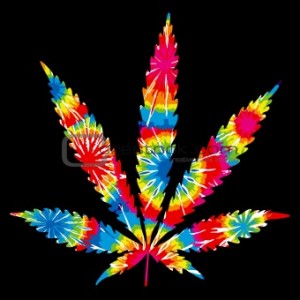 The United States Pharmacopeia listed marijuana as a useful drug for treating rheumatism, labor pains, and even nausea all the way until 1942. At this time, a campaign started back in the 30′s wanted to shed new light on cannabis as a powerful addictive substance that could get users mixed with other, harder drugs. From 1850 to 1930, marijuana was widely accepted as a recreational drug, but all of that stopped as soon as campaign of 1930 first came out. Many authorities still consider marijuana to be a gateway drug so there definitely is some sliver of truth in this statement. The high produced from the plant is relatively mellow compared to other drugs and long term users might end up chasing that high in harder substances. In the 50′s and 60′s, the drug gained popularity with the beat generation and the hippies respectively which solidified its place as a symbol of authoritative rebellion.
The United States Pharmacopeia listed marijuana as a useful drug for treating rheumatism, labor pains, and even nausea all the way until 1942. At this time, a campaign started back in the 30′s wanted to shed new light on cannabis as a powerful addictive substance that could get users mixed with other, harder drugs. From 1850 to 1930, marijuana was widely accepted as a recreational drug, but all of that stopped as soon as campaign of 1930 first came out. Many authorities still consider marijuana to be a gateway drug so there definitely is some sliver of truth in this statement. The high produced from the plant is relatively mellow compared to other drugs and long term users might end up chasing that high in harder substances. In the 50′s and 60′s, the drug gained popularity with the beat generation and the hippies respectively which solidified its place as a symbol of authoritative rebellion.
Modern Troubles with Weed
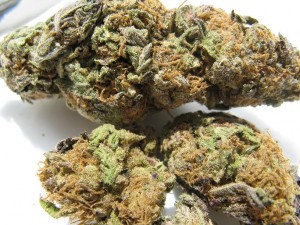 1970 brought about a huge decrease in the popularity of marijuana when The Controlled Substances Act grouped marijuana together with LSD and Heroin as a schedule one drug. This means that the drug has no accepted medical use along with a high potential for abuse. When the Mexican government decided to spray its marijuana crop with pesticides in 1975, it made it that much harder for people to acquire the drug in North America. People feared toxic side effects after the crop was sprayed with pesticide and as a result, Columbia became the next major supplier of cannabis. The Reagen and Bush eras further hurt the cause of marijuana as their zero tolerance policies led to mandatory sentencing for possession of the substance as well as more surveillance along the borders to keep the drugs from coming in.
1970 brought about a huge decrease in the popularity of marijuana when The Controlled Substances Act grouped marijuana together with LSD and Heroin as a schedule one drug. This means that the drug has no accepted medical use along with a high potential for abuse. When the Mexican government decided to spray its marijuana crop with pesticides in 1975, it made it that much harder for people to acquire the drug in North America. People feared toxic side effects after the crop was sprayed with pesticide and as a result, Columbia became the next major supplier of cannabis. The Reagen and Bush eras further hurt the cause of marijuana as their zero tolerance policies led to mandatory sentencing for possession of the substance as well as more surveillance along the borders to keep the drugs from coming in.
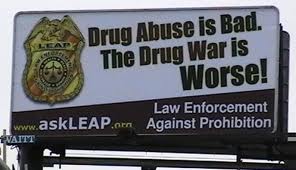 As marijuana could no longer be smuggled in across the border, those within the United States started to grow the plant themselves. Hawaii and California were two of the biggest cultivators of the crop when the war on drugs became all too real. Finally, 1982 brought about increased attention from the government towards farms which grew cannabis and they cracked down accordingly. This led to an increase in indoor growing and the invention of the hydroponic growing system which is the main way people grow their crops today. These indoor plants were tuned specifically to produce a large yield without taking up a lot of space. All of these government restrictions caused the popularity of cannabis to decrease yet again as it became harder and harder to acquire. But the 1990′s brought about a new generation willing to give the drug a try and it has continued to gain popularity ever since.
As marijuana could no longer be smuggled in across the border, those within the United States started to grow the plant themselves. Hawaii and California were two of the biggest cultivators of the crop when the war on drugs became all too real. Finally, 1982 brought about increased attention from the government towards farms which grew cannabis and they cracked down accordingly. This led to an increase in indoor growing and the invention of the hydroponic growing system which is the main way people grow their crops today. These indoor plants were tuned specifically to produce a large yield without taking up a lot of space. All of these government restrictions caused the popularity of cannabis to decrease yet again as it became harder and harder to acquire. But the 1990′s brought about a new generation willing to give the drug a try and it has continued to gain popularity ever since.
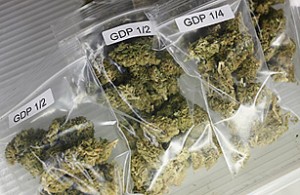
It is difficult to imagine what the world might be like today without the popularity of marijuana. For some, it is the only way to get to sleep at night or to stop the pain. But for most, the drug is simply recreational and used after a long day of work or when in the company of friends. As cannabis is much less harmful to the body than other accepted recreational drugs like alcohol, it is no wonder that it is growing in popularity not only in our country, but all around the world. As the government seems to be caring less and less about the regulation of marijuana, we may be on the brink of a radical change in our society’s view of it. Just remember that being able to smoke cannabis was not a privilege always shared by the people of our country.


Recent Comments